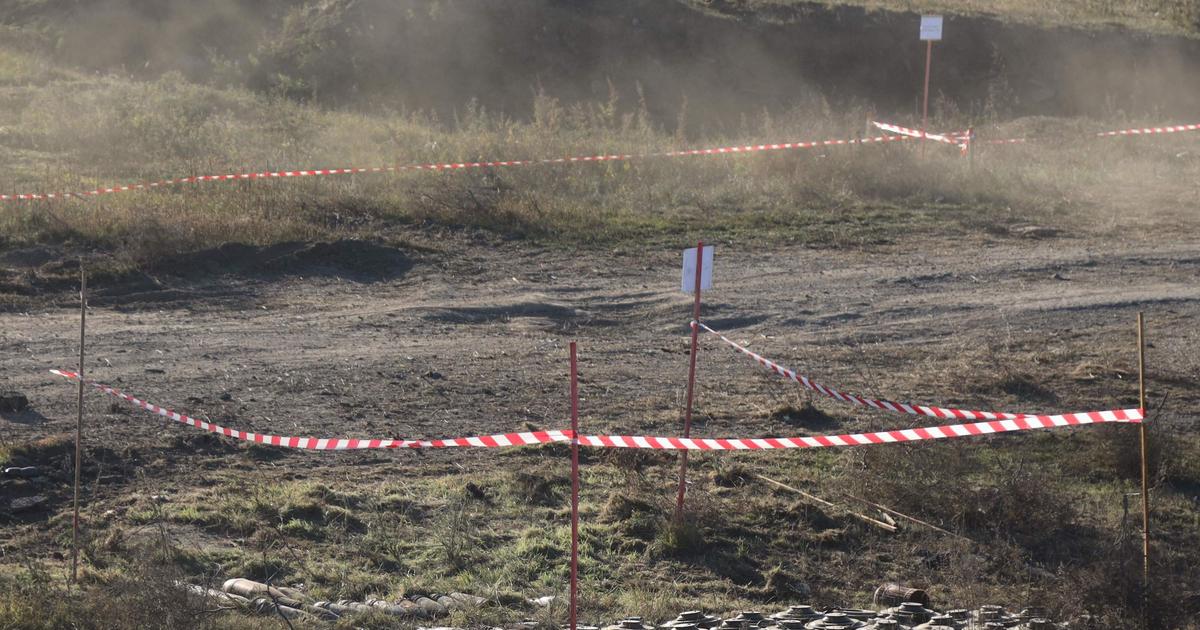Russia has used at least seven types of fragmentation and blast-effect anti-personnel mines since its invasion of Ukraine on February 24, reveals the Landmine Monitor 2022 report released on Thursday, November 17.
"
This is the first time that a country that is a signatory to the Mine Ban Treaty has faced the use of mines on its territory by another country
," explained Mary Wareham, a member of the research team of the Landmine Observatory, at a press conference.
"
This is a major setback for the treaty on
anti-personnel mines
," added the expert, also a member of the NGO Human Rights Watch.
The use by Russia - the country with the world's largest stockpile of anti-personnel mines (26.5 million) - of this type of weapon in Ukraine has been strongly condemned by various countries.
Mines produced by Russia
According to the report, which measures the implementation of the 1997 Anti-Personnel Mine Ban Convention (or Ottawa Treaty), six of the types of mines used by Russian forces in Ukraine are fragmentation (MOB, MON- 50, MON-100, OZM-72, POM-2/POM-2R and POM-3).
Russia also uses blast mines (PMN-4).
All were produced by Russia or the USSR, depending on the report.
The number of civilian victims of mines and other explosive remnants of war recorded in Ukraine during the first nine months of the year (277) is almost five times higher than the number of victims recorded in 2021 (58).
Read alsoWar in Ukraine: why Russia is abandoning Kherson
Mary Wareham also pointed out that HRW had sent a letter to kyiv after Moscow accused Ukrainian forces of using mines.
"
Last August, we asked questions about these allegations and asked them to respond to them
," she said, hoping that Kyiv will do so during the assembly of States Parties which will take place in Geneva next week.
164 states are party to the Ottawa Treaty and one signatory, the Marshall Islands, has yet to ratify it.
After a significant reduction in the number of victims following the treaty's entry into force, the number has reached "
dramatically
" high levels over the past seven years, according to the report.
At least 5,544 people were injured or killed in 2021. Civilians accounted for the majority of recorded casualties, with half being children.
3.3 million mines in Ukraine
Last year, Syria, a non-signatory to the treaty, recorded the highest number of annual victims (1,227), followed by Afghanistan (1,074), a state party.
The report, which covers the period from mid-2021 to October 2022, highlights that in addition to Russia, the junta in Burma, which is not a party to the treaty, also uses these weapons to fight against the rebellion.
Non-state armed groups also used them in at least five countries: Colombia, Central African Republic, India, Myanmar, and Democratic Republic of the Congo during the reporting period.
Demining actions around the world are another important challenge.
As in previous years, the majority of clearance in 2021 was carried out by Cambodia and Croatia.
Read alsoWith the war in Ukraine, will Russia lose Central Asia?
Thirty States Parties have completed their clearance obligations since the Ottawa Treaty entered into force in 1999. But only two of the 33 States Parties still contaminated appear to be able to meet their clearance deadlines under the treaty, Sri Lanka and Zimbabwe.
Another concern is the ever-decreasing funding for victim assistance.
According to the report, the year 2021 saw the lowest level of funding for this sector since 2016, despite the growing needs and the high number of victims observed in recent years.

